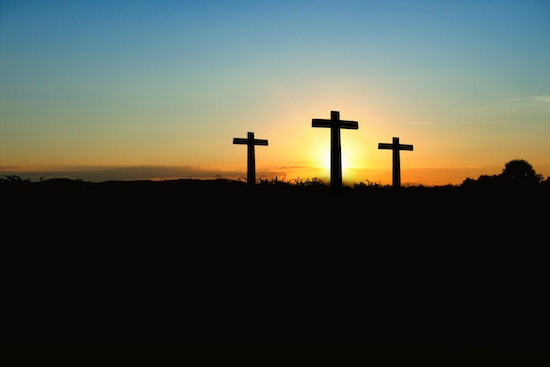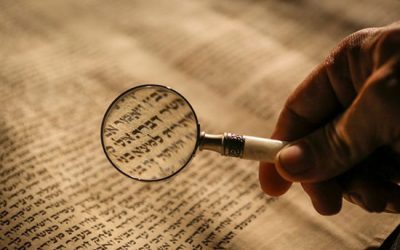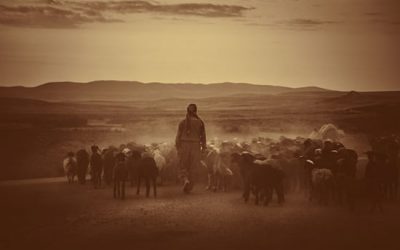Who Is Mary Magdalene in the Bible
Mary Magdalene was a remarkably dedicated follower and supporter of Jesus Christ during His earthly ministry.
She is mentioned in all four canonical accounts of the Gospel of the Bible (Matthew, Mark, Luke and John) and was one of several women who was not only a disciple of Jesus, but also supported His ministry financially (Luke 8:1-3).
Her deep devotion to Jesus is clear because she was with Him during His ministry, during his crucifixion (while most of His other followers were in hiding), and after His resurrection.
Mary was a very common Jewish name at the time of Jesus, so it’s not surprising that among the many followers of Jesus, there were multiple Marys. Mary Magdalene is often misunderstood and even misidentified as other women named Mary in the New Testament.
To better understand who Mary Magdalene really was, we’ll look at:
- Her life before Jesus
- Her life with Jesus
- Common misconceptions about her
- What we can learn from her
Let’s begin with what we can learn from the Bible about before Jesus came into her life.
Mary Magdalene’s life before Jesus
Not much is said in Scripture about Mary Magdalene’s early life, but as her last name suggests, she was from Magdala, a fishing village on the western shore of the Sea of Galilee.1
She’s believed to have been wealthy since she helped support Jesus’ ministry from her own resources (Luke 8:2-3), though the source of such wealth isn’t mentioned.
A lot of Jesus’ life and ministry took place in and around the Galilean region, which included Magdala. It makes sense, then, that Mary Magdalene would encounter Jesus Himself at some point during His ministry.
The Bible says that Mary Magdalene was possessed by seven demons (Luke 8:2). Seven! Jesus healed many people from demon possession during His ministry, but the Bible records only one other person who had more demons than Mary Magdalene (Mark 5:1-13; Luke 8:26-33).
People who were demon-possessed in the Bible showed a variety of behaviors. Some were mute (Mark 9:17), some had seizures (Matthew 17:15), others had physical disabilities (Luke 13:10-11). Sometimes, someone who was possessed by evil spirits posed a disturbance and a threat to others and themselves (Mark 5:2-5). They were sometimes even cast out of society and isolated from their family and friends.2
We can speculate about how she may have acted, as the show The Chosen depicts, but the Bible doesn’t mention any particular behaviors that Mary Magdalene showed when she was possessed. It’s likely she was treated as other demon-possessed people were treated in her time.
But once Mary Magdalene is healed, we see that she is in her right mind, has all of her faculties, and is active in society as a follower of Jesus.
It’s this miraculous healing that serves as a springboard for the remainder of Mary’s life as a faithful follower of Christ.
Mary Magdalene’s life with Jesus
 In Luke 7, the chapter in Luke right before Mary Magdalene is first mentioned, Jesus tells a parable to a Pharisee named Simon to demonstrate the connection between forgiveness and love.
In Luke 7, the chapter in Luke right before Mary Magdalene is first mentioned, Jesus tells a parable to a Pharisee named Simon to demonstrate the connection between forgiveness and love.
In the parable, two people are forgiven a debt neither can pay. One debt is 500 denarii–more than a year’s salary for an average worker.3 The other debt, 50 denarii, was much smaller, but couldn’t be paid nonetheless.
Jesus asks Simon an important question: “‘Now which of them will love him [the moneylender] more?’ Simon answered, ‘The one, I suppose, for whom he cancelled the larger debt.’ And He said to him, ‘You have judged rightly’” (Luke 7:42-43, ESV).
The message here is clear—forgiveness awakens and magnifies love, and when you’re forgiven much, you love the one who forgave much.
The Bible doesn’t mention how long Mary Magdalene suffered from evil spirits, but being possessed by multiple demons for any amount of time is unimaginable. Her healing must have sparked insurmountable joy, gratitude, and even curiosity about this man named Jesus.
How much love, then, did Mary Magdalene pour out to Jesus after He healed her from seven demons?
Mary Magdalene’s role in the ministry of Jesus
After being healed, Mary Magdalene expressed her love and devotion to Jesus with her priorities—her money, her time, and her daily life. She listened to His teachings and studied the Torah alongside Christ’s other followers. She was a disciple in every sense of the word, which was almost unheard of for women in that time.4
Accepting Mary Magdalene’s money was a little risky for Jesus. While it was generally acceptable, enemies of Jesus could have easily criticized Him for having women supporters.5
But the possibility of being criticized was never a concern for Jesus. And it did not deter Mary Magdalene from following Him.
She even stuck by Him when other disciples went into hiding during Jesus’ crucifixion.
Mary Magdalene’s presence at the crucifixion, burial and resurrection of Jesus

Image by Gerd Altmann from Pixabay
Matthew, Mark, Luke, and John all record that Mary Magdalene was present at Jesus’ crucifixion, burial, and tomb after His resurrection.
Jesus had predicted His arrest, death, and rise from the dead multiple times to the twelve main disciples before He was arrested. And sadly, when the mob arrived to arrest Him, the disciples all retreated and hid because they feared they would also be arrested and killed for following Jesus (Matthew 26:56). Peter even denied knowing Jesus when he was questioned about his relationship with Him (Luke 22:54-62).
The followers of Jesus knew that it was dangerous to be associated with Him. Throughout His ministry, Jesus had to defend His stance that He was the Son of God and that He had the authority to carry out His ministry. So we can only imagine how it felt to have His closest followers leave Him at the time of His greatest need.
Mary Magdalene, however, did not abandon Jesus during His time of need. In fact, she—along with Mary the mother of James and Salome—followed Him to his crucifixion to specifically take care of His needs (Mark 15:40-41).
But as Jesus died on the cross while Roman soldiers humiliated Him, all Mary Magdalene could do was watch (John 19:24-25).
After His death, Mary Magdalene followed closely that night as Jesus’ body was prepared and laid in a tomb nearby (Matthew 27:59-61). Even after death, she didn’t want to leave His side.
Very early the following morning, she and two others went to anoint His body, but all they found was an empty tomb. The stone had been rolled from the entrance of the tomb and there were no guards around!
Before Jesus appeared to His disciples, He appeared to Mary Magdalene (Mark 16:9). She was the first person to witness Jesus’ resurrection. John’s account of the Gospel records that she mistook Him for the gardener, but after Jesus said her name, “Mary,” she immediately recognized that it was Him (John 20:14-16).
No matter the circumstances, Mary Magdalene was devoted to Jesus. She was willing to stand by His side even when others didn’t, and Jesus knew He could trust her to share with the other disciples that He was risen from the dead (John 20:17-18).
But if this is what the Bible says about Mary Magdalene, what other ideas about her identity exist?
Misconceptions about Mary Magdalene
There are several misunderstandings about who Mary Magdalene was.
Due to speculation and various ideas from art and literature, she is often mistaken to be a prostitute and has been misidentified as the “sinful woman” who poured oil on Jesus’ head and washed Jesus’ feet with her tears (Luke 7:37-38).6 However, the Bible does not connect either of these things with Mary Magdalene.
Because Mary was a common name, Mary Magdalene is sometimes mistaken for Mary the mother of Jesus and wife of Joseph or Mary of Bethany, Lazarus and Martha’s sister. Lazarus, Martha, and Mary were from Bethany, which was a village in Judea, two miles from Jerusalem (John 11:1,18).
But we know that Mary Magdalene was from Magdala, a village in Galilee.
It is also rumored and repeated in the popular novel The Da Vinci Code that she was married to Jesus and that they even had a child together.
But there is no biblical evidence for any of these misinterpretations about Mary Magdalene. Instead, we can learn plenty from what the Bible does say about her, even though it’s not a lot.
What we can learn from Mary Magdalene
Mary Magdalene was a remarkable woman who received the gift of healing and followed Jesus as a result. She was brave, an active learner, and supported Him financially and emotionally.
Though other women followed Jesus as well, her name is the one most mentioned among these women in the Bible, and we can learn a lot from her life and example.
We have a Savior
One important lesson that the life of Mary Magdalene shows us is that we have a personal Savior.
No matter what has happened in your past, Jesus is always eager and willing to heal and transform you.
Your past does not have to be your identity. With God, your identity is new in Christ (2 Corinthians 5:17). There is great honor in that!
An encounter with Jesus leads to a devoted relationship
We can also learn from Mary Magdalene that complete devotion to Jesus Christ is an appropriate response to His healing.
Sometimes when we receive a gift, we may not know how to express our thanks. Sometimes our words or deeds seem to pale in comparison to what was done for us.
Throughout Jesus’ ministry, He gave many the invitation to “follow Me.” To the disciples (Mark 1:17-18), scribes (Matthew 8:19-22), the “rich young ruler” (Matthew 19:21), and to all people (Luke 9:23), He extends the same invitation to “follow Me.”
When Mary Magdalene was healed from seven demons, she experienced the true character of God. He came to her personally with love and compassion. And she responded to His call of: “If anyone serves me, he must follow me” (John 12:26).
Devotion to Christ is a demonstration of faith and love in Him

Image by RDNE Stock project
But what does following Jesus even look like?
For Mary Magdalene, it meant gratitude, focus, priority, and service. She gave Jesus her time, her attention, and her resources. She trusted Him to teach her the Bible, which didn’t happen for women often in Mary’s day.
She may have even been among the women in the upper room with the disciples when they were praying and waiting for the outpouring of the Holy Spirit, which means she would have been one of the first members of the early church, though the Bible does not name her specifically. We definitely know, though, that she followed Jesus and cared for Him when He needed it most.
For any of us, following Jesus might look like studying the Bible to know more about Him, or donating to church or to someone in need, volunteering at your local community center, or always being on the lookout for someone who might need encouragement. It might look like helping a loved one or a stranger who’s dealing with a tough situation. Or it might be as simple as agreeing to go wherever God leads, regardless of if it was part of your own plans or not.
Mary probably didn’t plan for her life to turn out the way it did. But after meeting Jesus, she embraced her life’s new focus wholeheartedly.
So no matter the time or place we’re in, following Jesus looks like surrendering to Him. And welcoming the adventure, the peace, the purpose, and the challenges this entails.
We can make the choice to live our lives for Christ just like Mary Magdalene did. We can give our time, our resources, our minds, and our hearts completely to Him as an act of faith and love.
So while there is plenty of fiction and fable surrounding who Mary Magdalene was, what we know for sure about her is plainly stated in the Bible: as a response to being healed by Jesus, she followed Him, supported His ministry, learned from Him, and was loyal to Him in His greatest time of need.
Interested in learning about other followers of Jesus? Check out,
- Grudem, Wayne and Thomas R. Schreiner. “Notes on Luke,” in The ESV Study Bible, English Standard Version, Crossway, 2008, p. 1967. [↵]
- Keener, Craig S. “Notes on Luke.” NIV Cultural Backgrounds Study Bible, 1763. [↵]
- Ibid., 1760. [↵]
- Keener, Craig. “Luke,” in NIV Cultural Background Study Bible, edited by John H. Walton and Craig S. Keener, Zondervan, 2016, p. 1761. [↵]
- Ibid.. [↵]
- Beavis, Mary Ann, PhD, “Who is Mary Magdalene?” The Center for Christian Ethics at Baylor University (2013). [↵]
More Answers
Getting to Know Mark—Gospel Writer and Follower of Jesus
Mark (whose full name was John Mark) had a lot of roles in the New Testament: he was an early follower of Jesus Christ, he traveled the Mediterranean as a Christian missionary, and he wrote a book of the Bible.
Understanding Luke: The Beloved Physician, Historian, and Evangelist
Who was Luke in the Bible? What was he known for and what contributions did he make for the early church? Find out here.
Exploring the Life of the Apostle Paul
The apostle Paul went from Pharisee to Christian after a miraculous encounter with Jesus. He spent the rest of his life spreading the Gospel and writing words we still read today.
All About the Disciple, Simon the Zealot
“Simon the Zealot” was one of the 12 disciples chosen by Jesus Christ. But despite this important role, the New Testament doesn’t provide specific details about his life, family, job, etc.
Judas Iscariot, the Most Infamous Disciple of Jesus
Judas Iscariot is best known for betraying Jesus with 30 pieces of silver. This page looks more closely at who he was and what led him to do so.
Who Is Thaddeus, the Disciple?
Thaddeus (or Thaddaeus) is one of the more unique and obscure figures among Jesus Christ’s disciples in the New Testament. Though we know little about him from the Bible or tradition, we do know that he went by a few names, specifically Thaddeus, Lebbaeus, and Judas of James.
Matthew—From Tax Collector to Jesus’ Disciple
In the first book of the New Testament, we find the Gospel story from the perspective of Matthew. He was a Jewish tax collector from Capernaum in the first century AD, and he was likely despised by fellow Jews for choosing that profession.
Who Was Jesus’ Disciple Named James, Son of Alphaeus?
Two of Jesus’ 12 disciples were named James. While more is known about James the son of Zebedee and brother of John, let’s see what there is to know about the other James, known as James the son of Alphaeus—also sometimes referred to as “James the Lesser.”
What the Bible Tells Us About Thomas the Apostle of Jesus
You might know him as “Doubting Thomas” because he refused to believe in Jesus Christ’s resurrection without first seeing Jesus.
All About the Disciple James, Son of Zebedee
James the son of Zebedee was a fisherman who became Jesus’ disciple. Discover how his decision to follow Jesus shaped his life and the beginnings of the early Church.
Who was the Apostle John?
What does the Bible say about the apostle John? What is he known for today? Learn more about John’s life, ministry, and legacy here.
All About Bartholomew, a Disciple of Jesus
Bartholomew is a lesser-known character in the New Testament who is mentioned in each of the lists of the twelve disciples of Jesus Christ (Matthew 10:2-4; Mark 3:14-19; Luke 6:13-16). He is most likely the same individual as Nathanael (see John 1), someone who was sincerely studying the Scriptures and waiting for the Messiah to come.
What Do We Know About Andrew the Disciple?
Andrew was Jesus Christ’s first disciple (John 1:37-40) and the first to recognize Him as the Messiah.
Simon Peter: Fisherman to Disciple to Apostle
Simon Peter was a simple fisherman who became one of the most well-known disciples of Jesus Christ. He is perhaps best known for being part of Jesus’ inner circle of three disciples, walking on water, and proclaiming Jesus as the Son of God.
Who Was Philip the Disciple In the Bible?
Philip was one of the 12 disciples called by Jesus Christ during His earthly ministry. He was originally from the city of Bethsaida and to this day is often known as the “practical disciple.”
King David: How Was He a Man After God’s Own Heart?
War, bloodshed, murder, adultery—all of these crimes overshadowed the life of a biblical Old Testament man named David. Yet he was called a man after God’s own heart, not to mention one of Israel’s greatest heroes and kings.
The Story of Moses in the Bible: What His Life Teaches Us
A baby on death row, an outcast prince, a humble shepherd, and an unlikely deliverer. All these titles describe the individual that led Israel out of slavery in Egypt to the borders of the Promised Land.
The 42 Kings (and 1 Queen) of Israel and Judah in the Bible
Conspiracies, royal scandals, dictatorships—history is full of them. And Bible history is no different when we stop to look at the kings of ancient Israel in the Old Testament.
Who Were the Israelites in the Bible?
The Israelites in the Bible, also known as the children of Israel or ancient Israel, were a nation God called to represent Him to the world. As recorded in the book of Exodus, He delivered them from slavery in Egypt under Moses’s leadership and brought them to the Promised Land of Canaan (located in a similar area to present-day Israel).
What We Can Learn from the Life of Joshua
Joshua was an iconic leader in the Old Testament of the Bible. As a successor to Moses, he was both a humble servant of God and a strong warrior. God called Him to lead the nation of Israel to take possession of Canaan, the Promised Land—a task he took on with faith and courage.
Why is Abraham Important in the Bible?
God communicated directly with Abraham and made a covenant with him that would provide land, protection, and fruitfulness for his descendants. And he indeed became the father of many nations, making him a foundational figure in three monotheistic world religions: Judaism, Islam, and Christianity (Genesis 17:5, 19-20; Genesis 25:1-6, 12-18).
Who Were the Judges of Israel in the Old Testament?
Times of crisis call for men and women of action. The Israelites, newly settled in the Promised Land, found themselves in those times. As enemy nations attacked and oppressed the tribes, they cried out to God for help. He, in turn, sent them men and women of action—known as judges.
Life Lessons from Joseph in the Bible
Joseph is one of the more well-known people from the Bible’s Old Testament. He showed remarkable strength, faith, and patience—even while facing great difficulty and injustice. All because he let God lead.
Didn’t find your answer? Ask us!
We understand your concern of having questions but not knowing who to ask—we’ve felt it ourselves. When you’re ready to learn more about Adventists, send us a question! We know a thing or two about Adventists.























